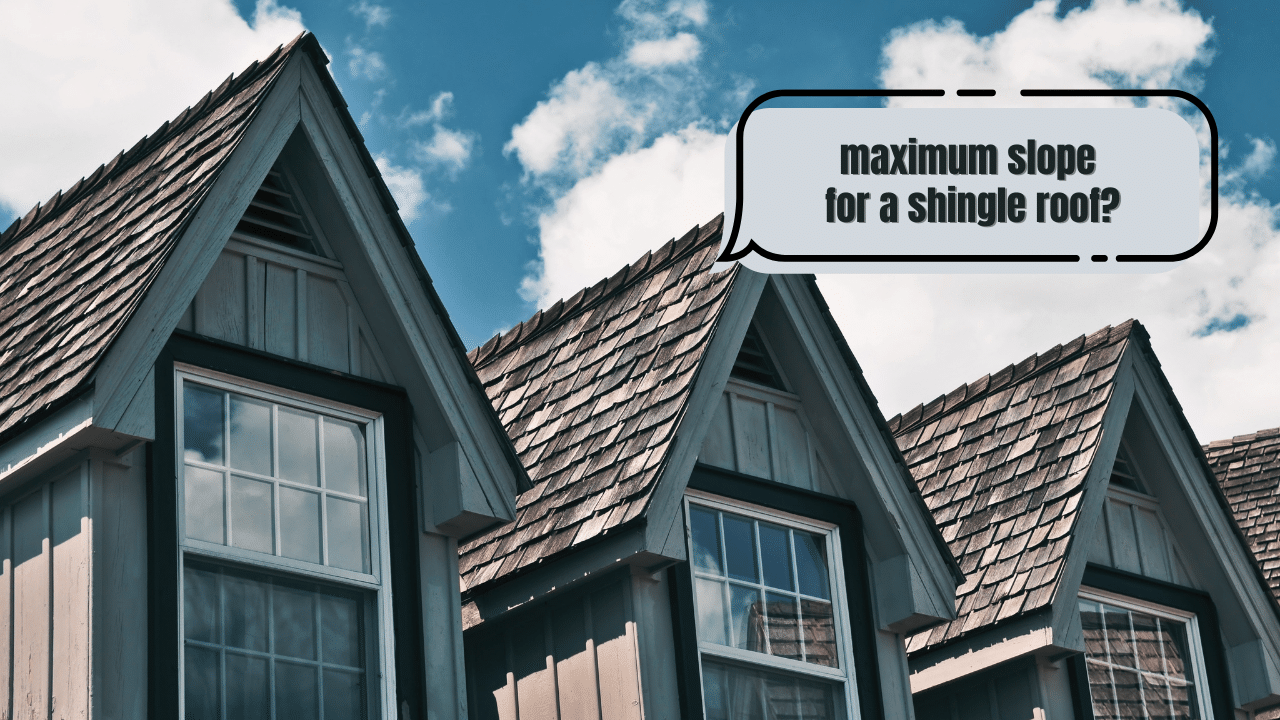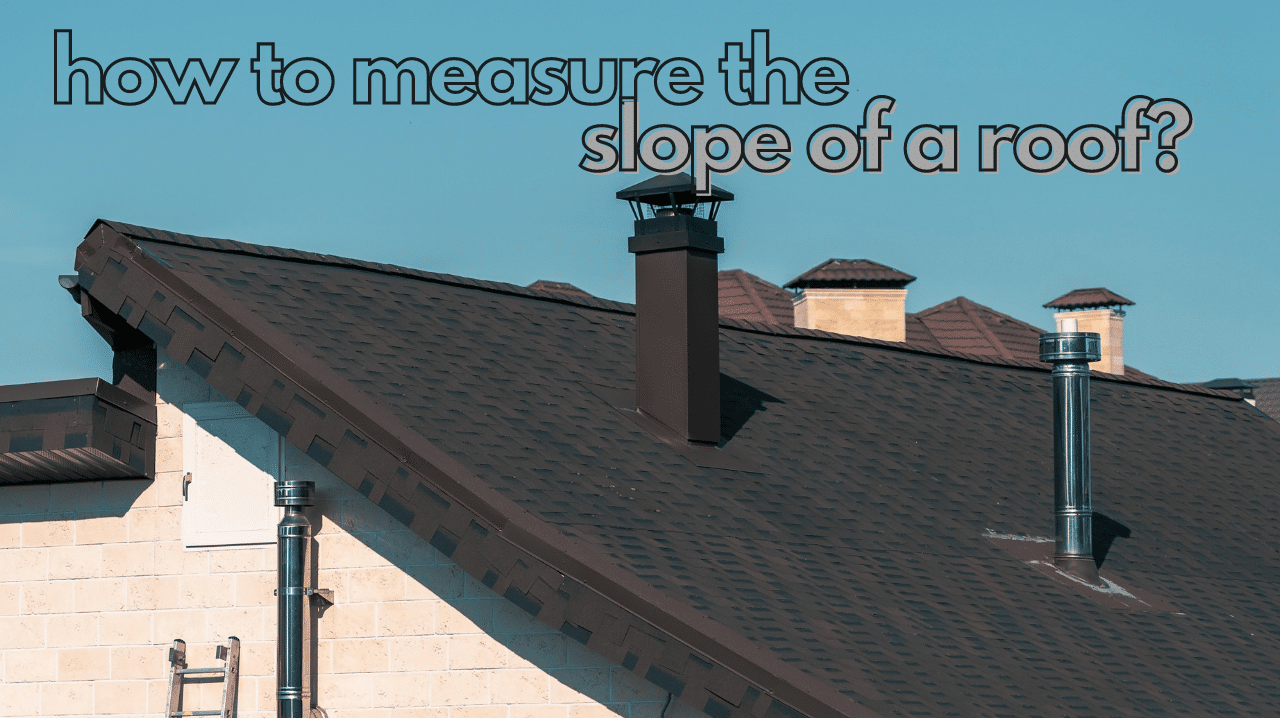When installing roof shingles, you may be shocked to learn that they have an absolute minimum pitch that they can be installed with. Knowing what this pitch is will help you plan well ahead of the shape of the roof and even change the materials of the roof to better its overall shape.
The minimum roof pitch that your roof can be when using any shingle is 2:12; this is because shingles are not strictly watertight. When the roof has a lower pitch, water can flow back up the roof and start leaking into the house, causing damage to the beams inside the roof.
Understanding the measurements of your roof and everything that it needs to be perfect for your shingles is important. If your shingles are installed incorrectly, the chances are higher than the inside of your home will be damaged and require constant repairs.
Can You Shingle a Low Slope Roof?
No, the lowest slope or pitch that your roof can be is at 2:12, and all shingle manufacturers have this general guideline for their shingles. If your roof is too flat, it can cause a lot of damage to the shingles and the inside of your roof as the shingles cannot seal the roof properly.
Shingles work on overlapping parts, creating a weatherproof seal that works only if the water flows down the roof. When the roof is not sloped enough, the water can start heading in the wrong directions, causing damage to the roof and the shingles, eventually causing them to come loose.
We always recommend that you plan the roof from the start to have the right measurements when planning to use shingles. Shingles continue to be one of the most popular ways of making your roof weatherproof as it is fast to apply and can easily be fixed or changed later.
What is the Maximum Slope for a Shingle Roof?

The maximum pitch of your roof when installing shingles on your roof is usually around 4:12, which is a roof with an angle of around 45 degrees. Most roofers will agree that roofs at this slope or pitch will usually be nearly completely vertical.
If your roof has a steeper slope or pitch than this, you will have to order special shingles made to work at that angle. Many companies have shingles sealed in different ways or allow adhesives that keep them on the roof even in the worst storms and winds. (Related: How Long Does A Roof Last?)
Once the roof pitch gets too extreme normal shingles will not be able to stay on the roof effectively or may cause leaking because water may hit the roof. Further, the shingles will curl or change as the sun bakes them, allowing the top of the shingle to curl down.
How Do You Roof a Low Slope Roof?
When your roof has a slope or pitch that is too low for the use of shingles, the chances that it can leak increase drastically. As the roof becomes, flatter the chance of water accumulating and eventually breaking through your roof sealant becomes much higher.
If your roof has an extremely low pitch or slopes, you will have to use sealants such as rubber, tar, rolled roofing, or metal roofing. The roof slopes towards a drainage location to ensure that water cannot accumulate in a spot where there is no drainage.
This is often why roofs with lower pitches are constantly being drained or have a different drainage system than the rest of the house. These flat surfaces accumulate a lot more water when it is raining, making the challenge of keeping them dry that much worse.
Why Do Shingles Have a Minimum Slope Requirement?
Shingles are not waterproof, which means that they repel water by making an overlapping system that allows the water to flow down the roof. If the slope is too low, the water can be pushed back against the shingles, forcing its way up and onto the roof lining, causing eventual leaks.
You will often find that homes with shingles that are always leaking will be homes where the shingles have been leaking are homes where the shingles are at the wrong angle. Shingled roofs rely on a system of overlapping layers of linings and sealants that ensure there is no water going through.
The first layer consists of the shingles; underneath that, modern homes have a sealant layer that helps to insulate the entire roof. If your roof is leaking significantly, you will have to replace this layer in the affected area and then put new shingles on the roof as well.
How Do You Measure the Slope of a Roof?

The slope of a roof is the incline of a roof measured by the vertical rise of the horizontal run of the roof, with the run consisting of a set portion of the total span of the roof. The slope of a roof is measured by the total rise the horizontal part of the roof has to go towards the middle of the roof.
This means that if you are looking at a roof, the slope is how much the roof is rising towards the highest point of the roof. Usually, this is built in a ratio system in the United States, with all homes being built with the same roof slope system to allow for consistent roof shapes.
Further, you will find that builders are already familiar with the roof slope or pitch that a roof has specifically because they are all built similarly. Allowing workers to have the right tools to move around any roof, not only when building them but also when having to repair them.
Conclusion
The minimum roof pitch suggested for a shingled roof will always be 2:12, with the maximum roof pitch being 4:12. You need to consider this when building your home and choosing the materials you want to cover it; once the roof has been built, it will cost thousands to make even basic adjustments.
Just remember, your options for roofing material are as varied as your imagination!
